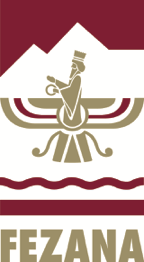Burr Ridge, Illinois, March 6, 2018 — FEZANA, the Federation of Zoroastrian Associations of North America, today announced Zoroastrian organizations throughout North America will mark the celebration of Nowruz (pron. nouˈɾuːz or New Day in English), Tuesday, March 20, 2018, the official turn of the Zoroastrian New Year and the Spring equinox.
Zoroastrian associations throughout North America will celebrate Nowruz with prayer ceremonies, community gatherings, participation in Nowruz parades, museum exhibits, tree plantings, social gatherings and, unique to Nowruz, by decorating beautiful Haft Seen1 (seven trays) tables at home with traditional Nowruz symbols.
“We call on people from all faiths, traditions and creeds to come together in the spirit of renewal and resolution as we celebrate the timeless beauty of Nowruz each year at the turn of the Spring Equinox,” said FEZANA President Homi D. Gandhi. “From celebrations and parades in major metropolitan cities to beautifully decorated haft-seen tables in Zoroastrian homes and communities throughout North America, Nowruz is an opportunity to embrace the possibilities that come with each new day.”
“We wish our Zarathustri brethren in Hafta Keshwar Zamin a very auspicious Nowruz,” said Erv. Arda-e-viraf Minocherhomjee, President, North American Mobed Council. “May Ahura Mazda shower his choicest blessings on our community and may truth and righteousness pave your way.”
Zoroastrians are followers of one of the world’s oldest monotheistic religions founded by the prophet Zarathushtra more than 3,000 years ago in ancient Iran. Zoroastrians have long-served as bridge builders in interfaith dialogue, believing in truth, righteousness, charity, beneficence, respect for the environment and the ultimate triumph of good over evil.
Zoroastrianism flourished as the imperial religion of three Persian empires, those of the Achaemenians, Parthians and Sassanians, and was the dominant religion from Turkey, and eastward to China during those times. North America’s Zoroastrian community includes those who arrived from the Indian subcontinent, known as Parsis, and those who came directly from Iran seeking religious freedom.
About FEZANA
Founded in 1987, FEZANA serves as the coordinating body for 26 Zoroastrian member associations and 14 corresponding groups throughout the United States and Canada. FEZANA promotes the study, understanding and practice of the Zoroastrian faith in North America. FEZANA represents the interests of its member associations, and carries out philanthropic and charitable activities worldwide. FEZANA Journal, FEZANA’s publication of record, circulates to Zoroastrian households in more than 22 countries, as well as to scholars, academicians and religious organizations worldwide. www.fezana.org
###
¹ Note to editors: for more information on Haft Seen tables please visit: https://www.youtube.com/watch?v=HZnoNXrkfO0





